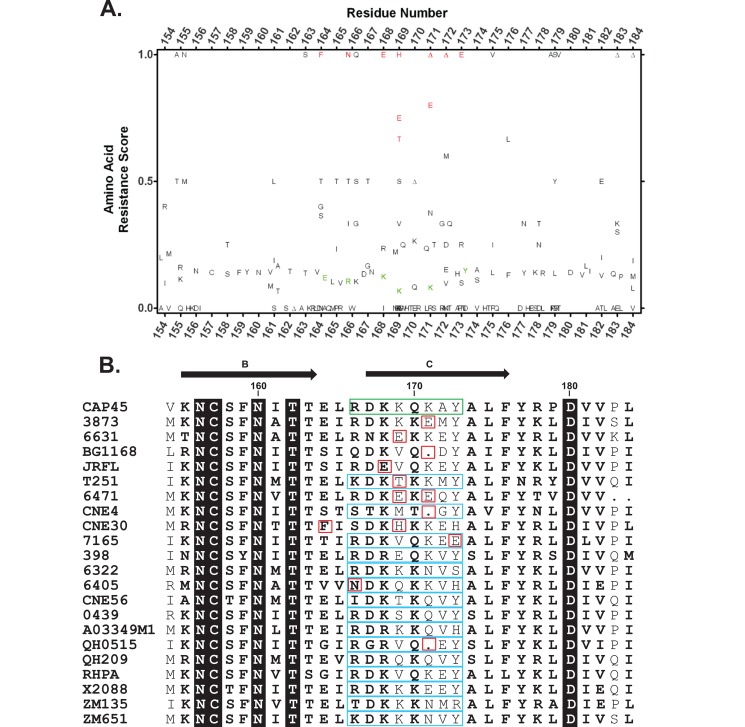Fig 2.
Design of gain-of-sensitivity mutants among PG9-resistant strains. (A) V1/V2 amino acid frequency analysis. Symbols correspond to the respective amino acids, with △ representing sequence gaps at the given position. For each residue at positions 154 to 184 (HXB2-relative numbering), the resistance score for a given amino acid (or a gap) was defined as the ratio of its number of occurrences in resistant sequences to its overall number of occurrences for the given residue position. A higher score indicates that the amino acid was preferentially found among resistant sequences, with a score of 1 indicating that the amino was found only among resistant sequences. Residues highlighted in red were selected for gain-of-sensitivity studies and were mutated to the amino acid types shown in green for the specified residue positions. (B) PG9-resistant strains selected for gain-of-function experiments, with highlighted residues selected for point-mutations (red) and/or swaps (cyan). The PG9-sensitive CAP45 sequence, used to determine the atomic structure of V1/V2, is shown as a reference, with the residue segment used in the swaps with the resistant strains highlighted in green. Strands B and C of V1/V2 shown at the top of the figure are based on the CAP45 structure. Residue positions with no variation are shown in white font on black background, while conserved residue positions are shown in bold.

